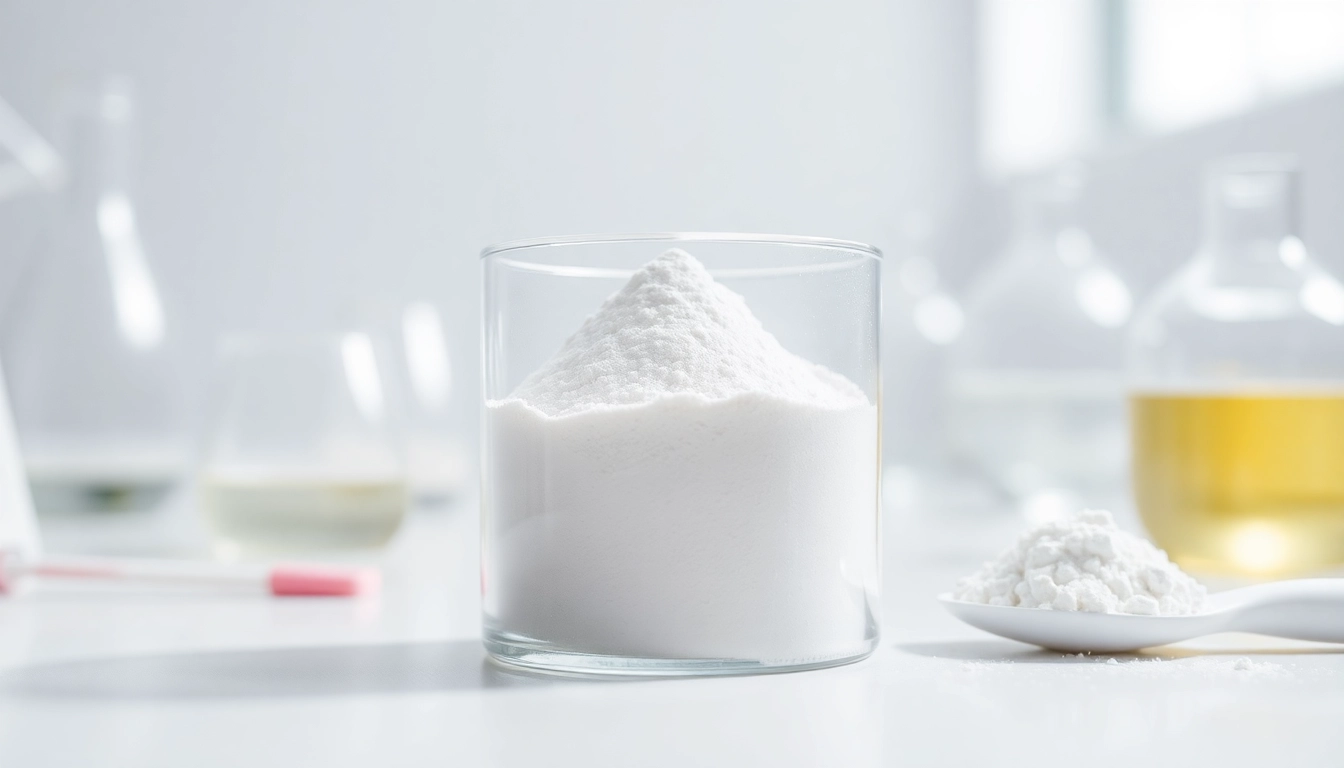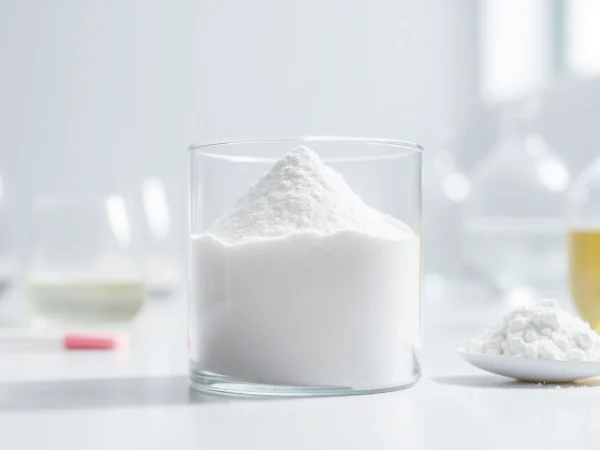Understanding Hydroxyethyl MethylCellulose: Properties, Applications, and Benefits
Introduction to Hydroxyethyl MethylCellulose
Hydroxyethyl MethylCellulose is a cellulose-based polymer that plays a pivotal role in various industries due to its unique properties and versatile applications. It is synthesized by the modification of cellulose, providing hydrophilic characteristics that enhance its functionality in diverse formulations. Widely used in construction, food, and pharmaceutical sectors, Hydroxyethyl MethylCellulose has become an essential ingredient in many products, facilitating improved performance and user experience. This article aims to explore the multifaceted properties, applications, advantages, regulatory considerations, and future trends associated with Hydroxyethyl MethylCellulose, highlighting its significance in contemporary manufacturing and formulation processes. To gain a deeper understanding of this compound, one can refer to resources such as Hydroxyethyl MethylCellulose.
What is Hydroxyethyl MethylCellulose?
Hydroxyethyl MethylCellulose (HEMC) is a non-ionic cellulose ether that is non-toxic and biodegradable. It is produced through the reaction of cellulose with ethylene oxide and methyl chloride, leading to the formation of hydrophilic hydroxyethyl and hydrophobic methyl groups. This combination endows HEMC with water retention capabilities, emulsification properties, and thickening abilities, making it a valuable ingredient across various applications. The viscosity of HEMC can be adjusted by controlling the molecular weight and the degree of substitution, which are crucial factors influencing its performance in different formulations.
Historical Context and Development
The development of Hydroxyethyl MethylCellulose dates back to the mid-20th century when the need for more effective and versatile thickeners and stabilizers emerged in industries like construction and food. Researchers aimed to modify cellulose to enhance its water retention, emulsification, and gelling properties. This exploration led to the synthesis of various cellulose ethers, including HEMC, which became known for its broad applicability and benefits. Over the years, continuous research and development efforts have refined the production process and improved its functionality, establishing it as a staple ingredient in many commercial preparations.
Key Properties of Hydroxyethyl MethylCellulose
HEMC exhibits several key properties that contribute to its effectiveness as an additive in multiple industries:
- Water Solubility: HEMC is soluble in water, forming thick, viscous solutions that enhance product stability.
- Thickening Agent: Its ability to increase viscosity without significantly altering the pH of formulations makes HEMC ideal for use in various products.
- Film-Forming Properties: HEMC can form flexible films upon drying, which contribute to moisture retention and product durability.
- Thermal Stability: HEMC demonstrates heat stability, thus maintaining its viscosity even in high-temperature environments.
- Biodegradability: As a natural polymer, HEMC is environmentally friendly, making it a preferred choice for sustainable formulations.
Applications of Hydroxyethyl MethylCellulose
Use in Construction and Building Materials
In the construction industry, Hydroxyethyl MethylCellulose is predominantly utilized as a thickener and water-retaining agent in products like tile adhesives, mortar, and plaster. The addition of HEMC enhances workability and adhesion properties in these formulations, allowing them to remain workable for longer periods. This characteristic is especially important in construction applications where extended open time is critical for successful application.
Moreover, HEMC helps to improve the mechanical strength of building materials by promoting better bonding and reducing the risk of crack formation. Its water retention capability ensures that moisture remains available for hydration, which is essential for achieving optimal strength and durability in cement-based products. The versatility of Hydroxyethyl MethylCellulose in construction contributes to enhanced performance and longevity of structures.
Applications in the Food Industry
The food industry has embraced Hydroxyethyl MethylCellulose for its functional properties and safety as a food additive. HEMC is commonly used as a thickener, stabilizer, or emulsifier in various food products, including sauces, dressings, and ice creams. Its ability to improve texture and mouthfeel significantly enhances the sensory attributes of food, leading to better consumer acceptance.
Additionally, HEMC helps to control moisture and maintain the quality of food products, thereby extending shelf life. Its application as a fat replacer in low-fat or reduced-calorie foods is particularly noteworthy, contributing to a desirable texture and mouthfeel while reducing caloric content. Furthermore, Hydroxyethyl MethylCellulose is safe for consumption, as it is non-toxic and approved by various food safety authorities worldwide.
Hydroxyethyl MethylCellulose in Pharmaceuticals
In the pharmaceutical sector, Hydroxyethyl MethylCellulose serves as a binding, thickening, and stabilizing agent in various formulations, including tablets, capsules, and topical solutions. Its biocompatibility and versatility make it suitable for both oral and topical applications. HEMC contributes to the controlled release of active ingredients, enhancing drug performance and patient compliance.
Moreover, HEMC has been used in ophthalmic solutions as well, where it functions as a lubricant, providing relief from dry eyes. Its formulation capabilities allow for the production of sterile solutions, emphasizing safety and effectiveness in pharmaceutical applications. The regulatory approval of HEMC in the pharmaceutical industry underscores its reliability and importance in developing safe and effective medications.
Advantages of Using Hydroxyethyl MethylCellulose
Benefits in Product Formulation
Using Hydroxyethyl MethylCellulose in product formulation offers numerous advantages that enhance performance and user satisfaction. Its multifunctionality allows it to serve several roles in a single product, reducing the need for multiple additives and simplifying formulation processes. HEMC’s thickening ability improves the texture and consistency of formulations, making products more appealing to end-users.
Additionally, HEMC’s compatibility with various other ingredients and its ability to maintain homogeneous dispersions contribute to uniformity in product consistency. This results in a more effective delivery of active ingredients and improved overall product performance, making HEMC an invaluable component in modern formulation chemistry.
Enhancing Stability and Texture
Stability is a critical aspect of product formulation, and Hydroxyethyl MethylCellulose excels in promoting stability in both physical and chemical properties. Its thickening and emulsifying properties help to stabilize suspensions and prevent separation, ensuring that products maintain their intended formulation over time. This stability is particularly vital in industries like cosmetics, where product performance and aesthetic appeal can be significantly impacted by phase separation.
Furthermore, HEMC enhances the texture of various products, contributing to desirable mouthfeel in food applications and pleasant application characteristics in cosmetic formulations. Its ability to form velvety textures improves consumer perception and satisfaction, ultimately leading to a more favorable market reception.
Environmental and Health Benefits
Hydroxyethyl MethylCellulose offers several environmental and health benefits, aligning with the growing consumer preference for sustainable and safe products. As a biodegradable and non-toxic ingredient, HEMC reduces environmental impact when used in formulations. This characteristic positions it favorably against synthetic alternatives, which can pose environmental hazards after disposal.
Health-wise, HEMC has a low potential for irritation, making it safe for use in both food and cosmetic applications. Its role as an allergen-free ingredient further enhances its appeal in formulations designed for sensitive skin or dietary restrictions. By incorporating Hydroxyethyl MethylCellulose into products, manufacturers can meet consumer demands for health-conscious and eco-friendly options.
Hydroxyethyl MethylCellulose and Regulations
Understanding Safety Standards
The safety and regulatory status of Hydroxyethyl MethylCellulose is an essential consideration for manufacturers across various industries. Regulatory bodies such as the U.S. Food and Drug Administration (FDA) and the European Food Safety Authority (EFSA) have evaluated the safety of HEMC and approved its use in food and pharmaceutical applications. Understanding these safety standards is critical for manufacturers to ensure compliance and consumer safety.
HEMC is classified as Generally Recognized as Safe (GRAS) when used in food products, allowing companies to include it as an ingredient without extensive premarket approval. Understanding the particular guidelines set forth by regulatory agencies helps manufacturers navigate the complex landscape of compliance while ensuring their products meet safety expectations.
Compliance in Different Industries
Compliance with regulatory requirements varies among industries, necessitating a thorough understanding of specific guidelines for Hydroxyethyl MethylCellulose applications. For example, in the food industry, HEMC must adhere to stringent food safety regulations concerning permissible concentrations and labeling requirements. In pharmaceuticals, comprehensive testing for efficacy and safety during the drug development process is essential.
By understanding and adhering to compliance requirements, manufacturers can mitigate risks associated with regulatory breaches, enhance product credibility, and foster consumer trust in their offerings. Staying informed and working closely with regulatory bodies enables companies to ensure their use of HEMC is within legal and safety frameworks.
Impact of Regulations on Usage
The impact of regulations on the usage of Hydroxyethyl MethylCellulose extends to formulation strategies, ingredient sourcing, and marketing approaches. Compliance mandates can influence formulation decisions, requiring companies to perform thorough testing and documentation to demonstrate the safety and efficacy of HEMC-containing products.
Additionally, regulations can shape market trends, with increased scrutiny leading to heightened demands for transparency and ingredient safety. This evolving landscape requires manufacturers to remain adaptable, ensuring that formulations using Hydroxyethyl MethylCellulose meet regulatory expectations while catering to consumer preferences for safety and quality.
Future Trends in Hydroxyethyl MethylCellulose
Innovations and Research Developments
The future of Hydroxyethyl MethylCellulose looks promising, with ongoing research and innovation leading to improved formulations and applications. Researchers are exploring novel methods to enhance the functionalities of HEMC, such as developing derivative products that offer specialized properties for targeted applications.
Innovation in production techniques, particularly in controlling viscosity and solubility properties, may lead to more efficient manufacturing processes, reducing waste and environmental impact. Furthermore, advancements in nanotechnology may open avenues for using HEMC in smart delivery systems, optimizing its application across various sectors.
Market Trends and Demand
The market demand for Hydroxyethyl MethylCellulose is anticipated to grow, driven by increasing awareness of sustainable and multifunctional ingredients. Industries are leaning toward natural and biodegradable additives, and HEMC’s properties align perfectly with these market demands. Enhanced consumer awareness regarding product safety and environmental factors fuels the market’s growth, as manufacturers seek reliable and effective ingredients for formulation.
Additionally, the COVID-19 pandemic has prompted increased focus on health and hygiene products, further boosting demand for HEMC in disinfectants, hand sanitizers, and personal care formulations. This trend indicates an expanding market scope for Hydroxyethyl MethylCellulose, necessitating preparedness for suppliers and producers to meet evolving consumer needs.
Potential New Applications on the Horizon
As research into Hydroxyethyl MethylCellulose continues to evolve, potential new applications are emerging across various industries. One promising avenue is in biomedicine, where HEMC’s properties may be utilized in drug delivery systems or regenerative medicine applications. Additionally, there is growing interest in utilizing HEMC for sustainable packaging solutions, leveraging its biodegradable characteristics in alignment with global sustainability goals.
Moreover, advancements in the cosmetic industry suggest future applications in high-performance personal care products, driven by consumer expectations for efficacy and environmentally friendly formulations. The adaptability of HEMC continues to present opportunities for innovation, ensuring its place in the future of many industries.










